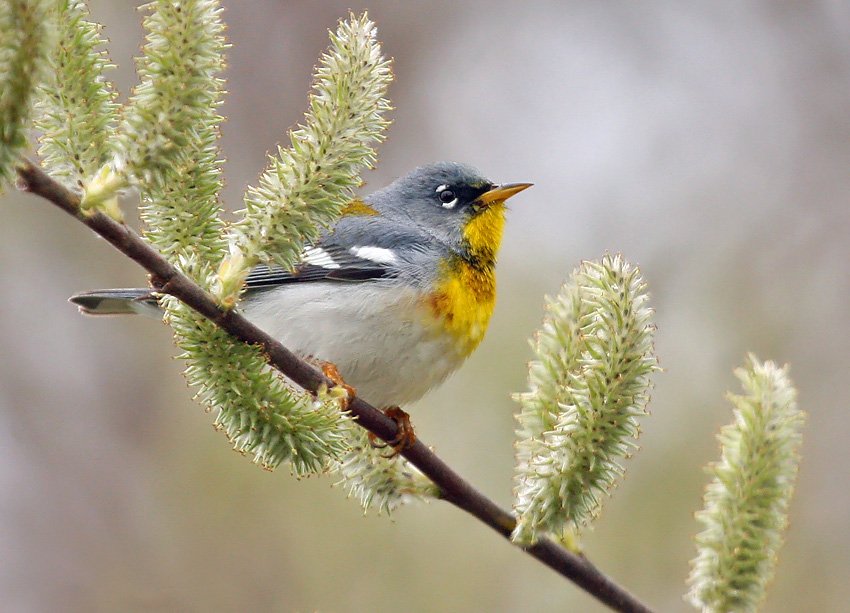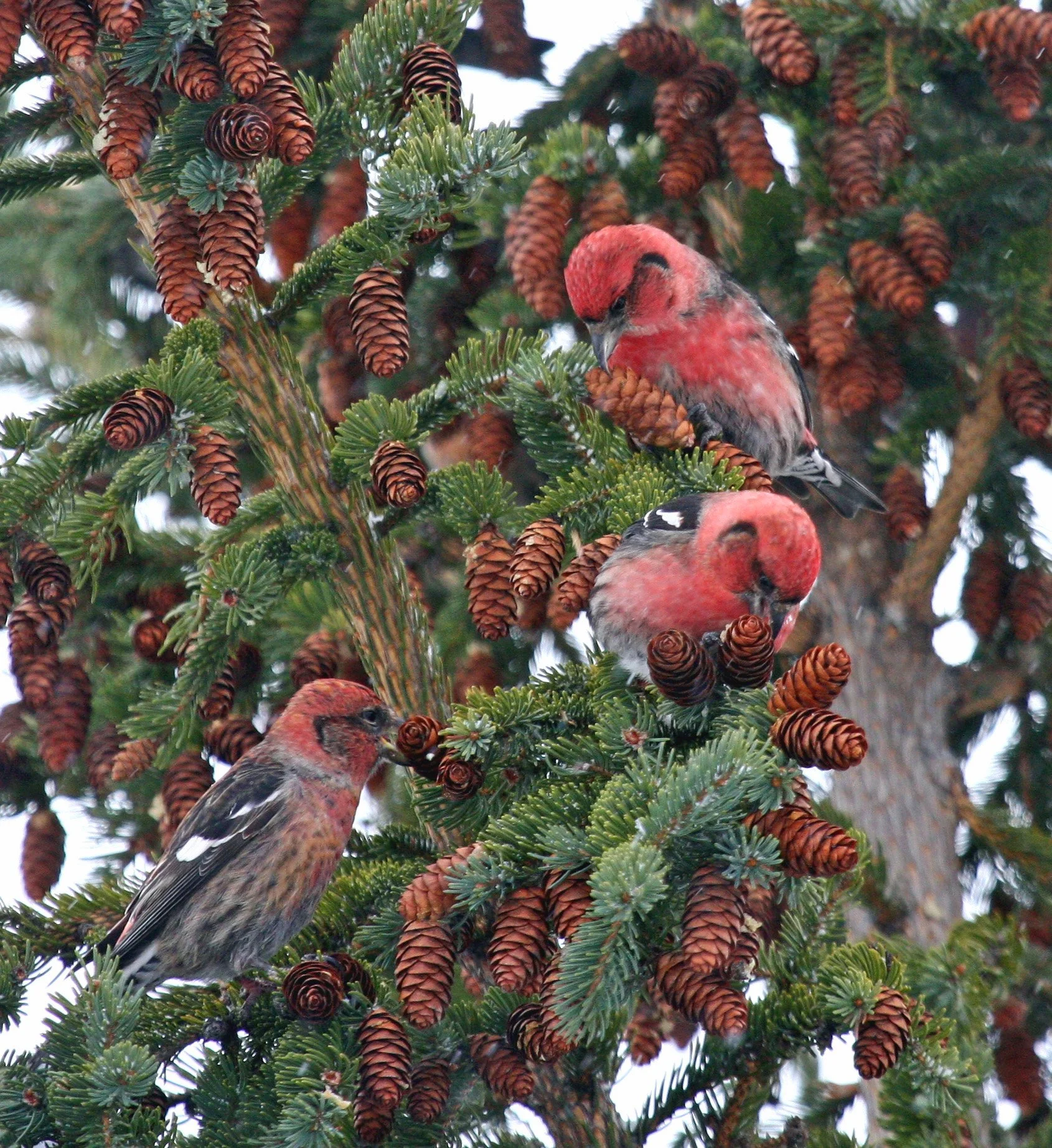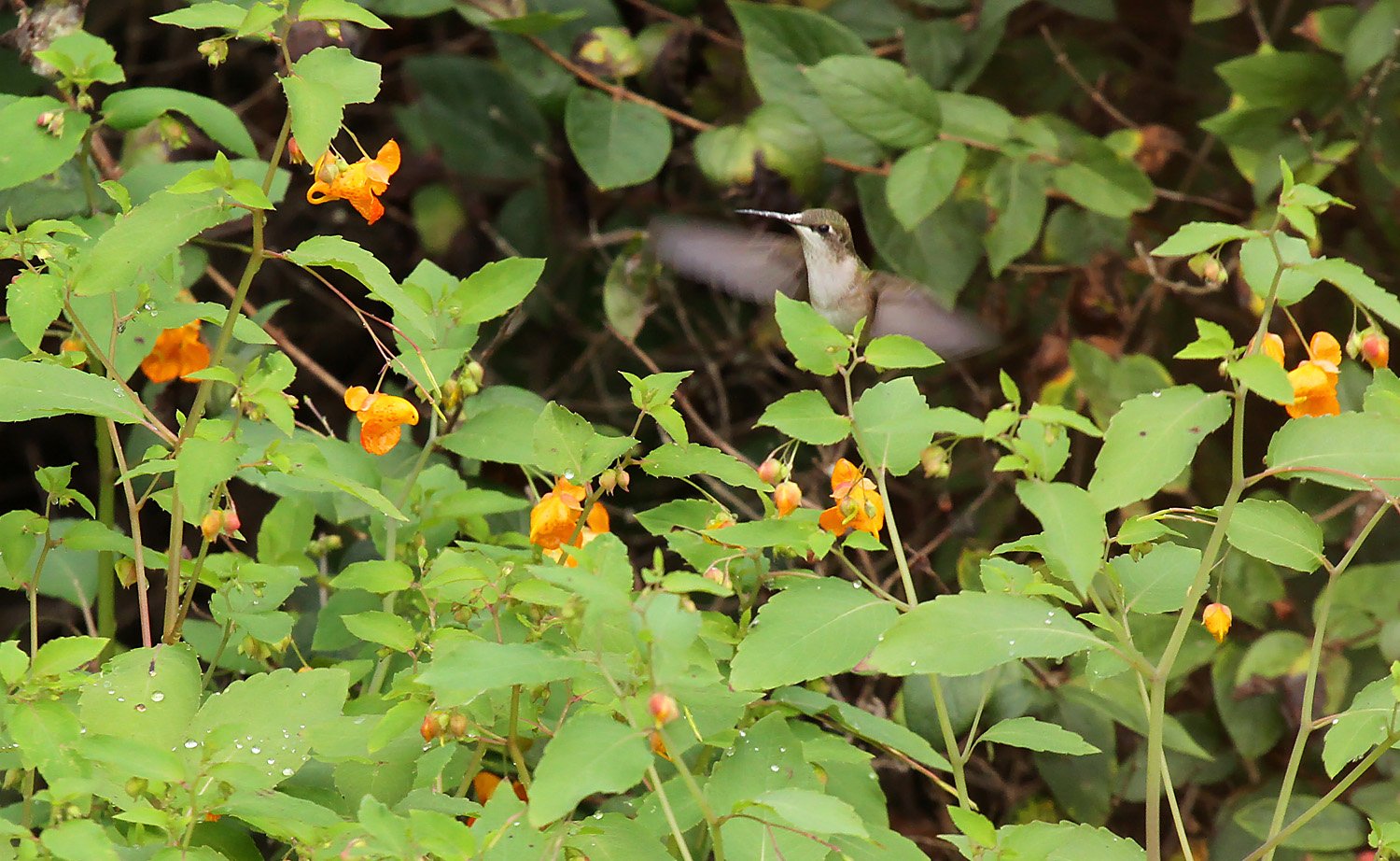
Nashville Warblers. Ryan Brady
Add Plants for Birds
96 %
96% of North America’s land-based birds feed insects to their young. Native plants — those naturally occurring in Wisconsin before European settlement — provide far more insects than nonnative trees, shrubs and flowers common in our yards.
Native plants evolved with native insects and the insects can safely digest chemicals in plant leaves, in turn providing food for birds.
534 species
Native oak trees support 534 species of butterfly and moth caterpillars while nonnative Gingko trees support 5. Native plants also supply nectar, seeds and berries, and shelter and nesting areas.
The good news is we can add a few native plants to expand our menu and provide more shelter for birds. We’ll help native bees and butterflies too, and keep our lakes and groundwater clean.
6 Plants To Get Started
Native trees, shrubs and wildflowers are hardy, low maintenance, and there are species to suit every purpose. To jumpstart adding native plants to your yard, we’re sharing some favorites that work in many Wisconsin soil types, are easy to grow, and are important for birds, pollinators and other wildlife.
These 6 plants are examples from plant groups good for birds. They include “native keystone plants” supporting up to hundreds of butterfly and moth caterpillars, i.e. bird food, and plants from lists created by Madison Audubon, Wisconsin DNR, and Mariette Nowak, author of Beyond the Birdfeeder: Creating a Bird-Friendly Yard with Native Wisconsin Plants.
View Beyond the Birdfeeder and request a printed copy.
-

Pussy Willow
Scientific name: Salix discolor
Mature size: 6-25 feet tall, 4-15 feet wide
Why to plant: This native shrub hosts 456 species of caterpillars of butterflies and moths (Bird food!) and provides shelter and nesting sites. Its furry flowers appear before leaves do, attracting small insects that provide critical food for early-arriving migratory birds.
Where to plant: Moist to wet areas where many other species would struggle.
Photo: Northern Parula on Pussy Willow. Ryan Brady
-

White Spruce Tree
Scientific name: Picea glauca
Mature size: 40 to 60 feet; 15-foot spread.
Why to plant: Hardy tree works well in cities and as rural windbreaks. Provides nesting sites, shelter and food for birds and other wildlife. Crossbills, Evening Grosbeaks and Red-breasted Nuthatches enjoy the seeds; Grouse, rabbits and deer the foliage.
Where to plant: White spruce prefers cool, moist soils with good drainage.
Photo: White-winged Crossbills on Spruce. Ryan Brady
-

Ox Eye Sunflower
Scientific name: Heliopsis helianthoides
Mature size: 3 feet to 6 feet
Why to plant: An early to mid-summer bloomer, this sunflower provides seeds for songbirds and attracts butterflies. Nice too as a cut flower.
Where to plant: A good option for clay soils, also grows well in just about any reasonably fertile soil.
Photo: Goldfinch on Ox-Eye sunflower. Ryan Brady
-

Spotted Jewelweed
Scientific name: Impatiens capensis
Mature size: 2 to 5 feet tall
Why to plant: This self-seeding annual flowers in mid-summer and continues until frost kills the plant. Hummingbirds, butterflies and bees are attracted to nectar in the bright orange showy flowers and birds to the insects.
Where to grow: Moist, shady areas although the plant will grow in all soil types if it receives sufficient moisture.
Photo: Hummingbird hovering over Spotted Jewelweed. Ryan Brady
-

Serviceberry
Scientific name: Amelanchier species
Mature size: Depends on the species of serviceberry. Ranges from a shrub to a small tree.
Why to plant: Provide insect food during spring and early-mid summer fruit when few other fruit sources are yet available. Attracts many bird species such as waxwings, flickers, thrushes, vireos, grosbeaks and tanagers.
Where to grow: Full sun to full shade; does best in lightly moist to moist soils but tolerates sand and clay.
Photo: Cedar Waxwing on Serviceberry. Ryan Brady
-

Rough Blazing Star & Prairie Blazing Star
Scientific name: Liatris aspera & Liatris pycnostachya
Mature size: 2 to 3 feet for Rough Blazing Star; 3 to 5 feet tall for Prairie Blazing Star.
Why to plant: These Liatris species are easy to grow and will attract hummingbirds, butterflies, bees and other pollinators seeking nectar. In turn, birds are attracted to the insects and eat the seeds in fall.
Where to grow: Rough Blazing Star grows best in full sun in dry to medium soils and Prairie Blazing Star needs full sun and grows well in moist soils and clay.
Photo: Rough Blazing Star. Thomas Meyer
Where to buy native plants ✻
Wisconsin offers many options for buying native plants beneficial for birds, bees and other wildlife. Here are some good places to start.
2025 Wisconsin Native Plant Sales features listings compiled by SOS Save Our Songbirds.
Wisconsin DNR’s list of Wisconsin Native Plant Nurseries organizes them by region and describes their plants and services. Our partner Wisconsin nurseries have decades of experience with native plants: Johnson’s Nursery, Prairie Nursery and White Pelican Farm Native Plant Nursery.
Native plant collections curated for Wisconsin are available for purchase through the National Wildlife Federation’s Garden for Life program. Plants are provided by a regional network of growers, with free shipping.
Your local independent greenhouse may sell cultivars of native plants, which have been selected for desired traits. Learn more about these so-called “nativars” and considerations for buying them in this explainer from Wild Ones, a Neenah-based national nonprofit promoting environmentally sound landscaping practices and preserving biodiversity.
Try these websites for more in-depth information on native plants to better match your soil, moisture and sun conditions.
National Audubon Society’s Native Plants Database. Enter your 5-digit zip code to explore the best plants for birds in your area.
Wild Ones, a Neenah-based nonprofit with 13 Wisconsin chapters promoting native plants and natural landscapes.
Many Wisconsin native plant nurseries have lots of good information on native plants and growing tips. Try these partners’ websites: Johnson’s Nursery, Prairie Nursery, and White Pelican Farm Native Plant Nursery.
Wisconsin DNR’s Plant Native Plants To Help Nature webpage has resources for beginners through more advanced gardeners and offers restoration resources.
Garden for Wildlife, National Wildlife Federation’s zip-code-based lists of key trees, shrubs and flowering plants plus online purchasing through a regional network of growers.
Eastern Bluebird. Brian M. Collins
More plant lists ✻
Long-term care for your plants ✻
The most important thing you can do for your new plants is to plant them where they are meant to grow based on their light, moisture and soil requirements. Buy a few of the same species and try them in different areas of your property to see where they will grow best.
Mulch your new plants in order to protect them from drought and sudden changes in temperature.
Though generally hardier than many ornamental plants, native plants still need consistent water in order to thrive. They should receive water weekly by you or Mother Nature when they are being established.
Do not use herbicides, pesticides or synthetic fertilizers near your native plants.
Let your plants go to seed in fall to provide food for birds and small mammals.
Sara Windjue



